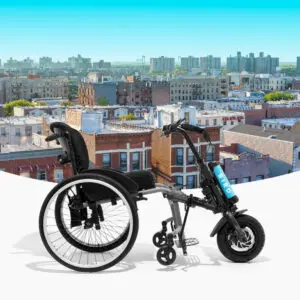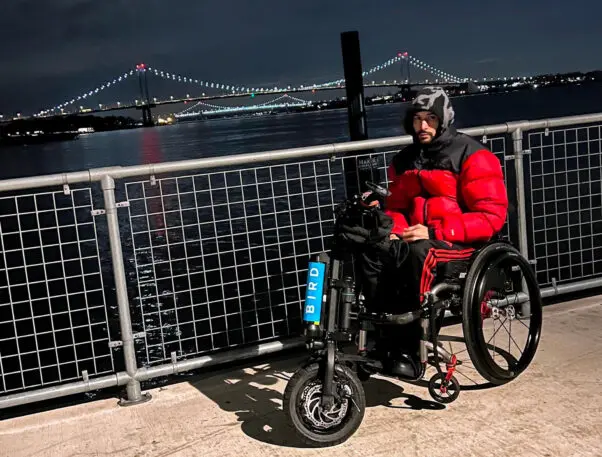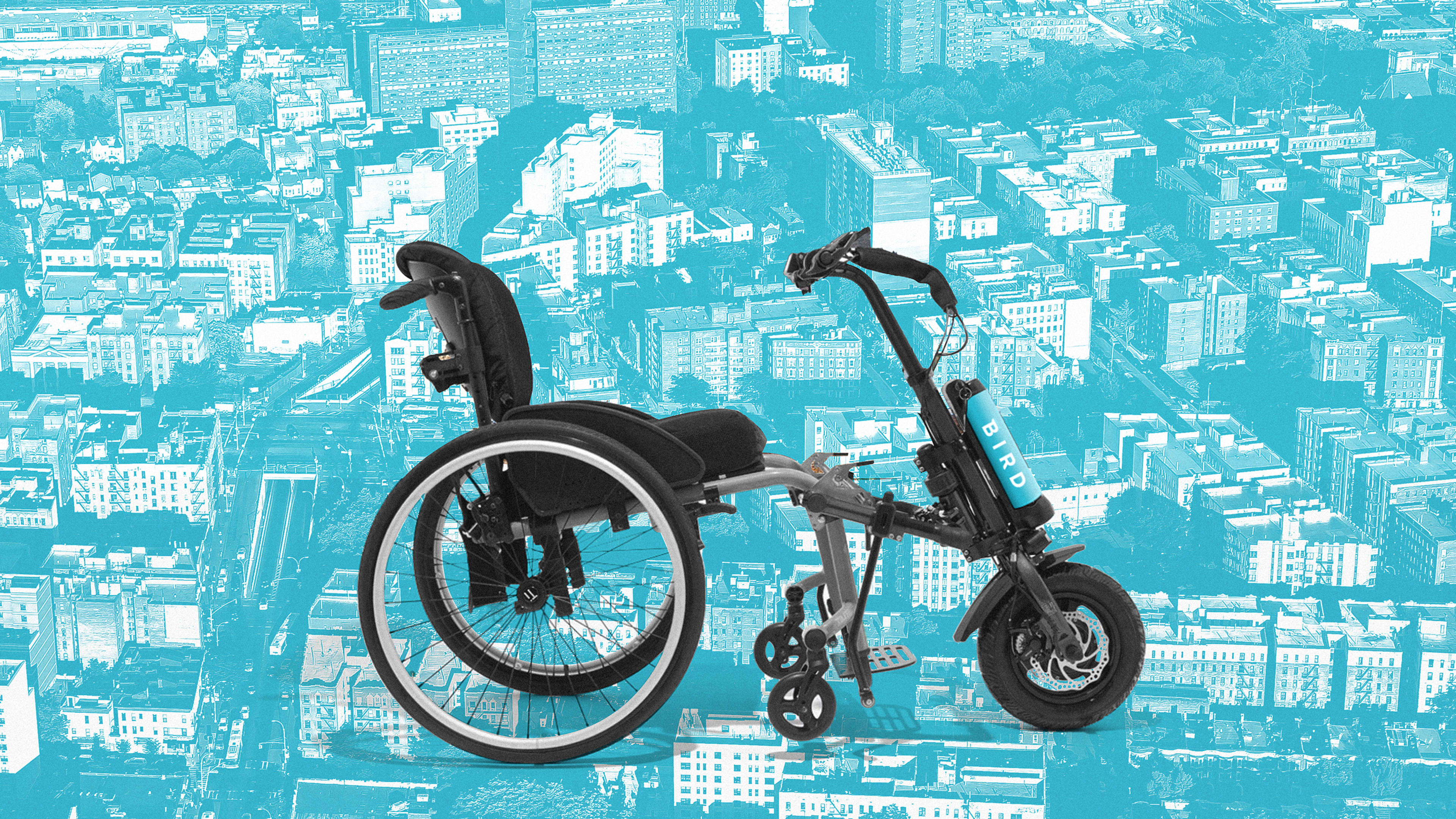Though you can spot electric scooters pervading city streets across America, New York has made a relatively slow entry into micro-mobility transport. In spring 2021, the city’s Department of Transportation (NYCDOT) rolled out a limited pilot, making approximately 3,000 e-scooters available in certain neighborhoods in the East Bronx.
In an effort to make transport more accessible for all, the city’s pilot required the three participating companies to also provide wheelchair-accessible scooters. Fulfilling that requirement, one of the companies, Bird, is launching a wheelchair attachment, equipped with an electric motor that latches onto manual wheelchairs. For the foreseeable future, the program will be free to residents with disabilities who wish to participate.

Bronx residents who register with Bird via email and are deemed eligible for the pilot will receive the attachments free of charge. Bird will hand-deliver them to customers’ homes, and a technician will install the hardware in a process that takes up to an hour, after which the attachments should easily latch on and off within seconds; the technicians will also demonstrate how to operate the motor. Bird won’t disclose the number of current participants, but Hahn says the company is working with the Mayor’s Office for People With Disabilities and groups such as the United Spinal Association to locate and identify more potential users.
Monica Bartley is manager of community organizers at the Center for Independence of the Disabled (CIDNY), which advocates for independence and equal opportunity for all people with disabilities. Bartley, herself, is a wheelchair user, and says that “assistive devices like this would enable people to be more independent and not have to rely on someone to push a wheelchair,” especially when navigating steep gradients at some curbs as she does in her own neighborhood.
Bartley’s colleague, communications director Jeff Peters, was intrigued by the setup technicians. “I’d like to know how familiar they are with a variety of wheelchairs and their experience in modifying them,” he says. “For some, a wheelchair or mobility device can be an extension of their bodies, so it’s important that any technicians treat it as such, with care and consent.”

Wheelchair users will be able to ride the devices in bike lanes or on sidewalks. However, CIDNY’s Bartley says they generally prefer to travel on sidewalks for safety reasons, “except when an obstruction that blocks the path of travel forces us on the street.” Hernandez says he only uses them at night, because it feels safer then than during the high-traffic daytime. Hahn reassures that the devices have been tested for safety. “Our technicians worked with the original manufacturer as well as with all Bronx program participants to install the necessary attachments and adjust speed settings and controls before taking them out for a test ride,” she says via email.
Frequent Bird users are now accustomed to the company’s well-known model of picking up and dropping off scooters via the app. But Bird deviated in this case due to the attachment process, which is less feasible under the original system. Part of the reason for the pilot will be to judge how this model works and whether users feel comfortable with it. If deemed successful, it may be expanded to more participants and new cities.
This is the newest addition to Bird’s accessibility offerings. In July 2021, the company partnered with mobility scooter specialist Scootaround to offer electric wheelchairs for Bronx residents, who can reserve them on the Bird app; that program has since expanded to San Francisco and San Diego. Competitors Veo and Lime, the other two companies in the New York pilot, also provide accessible options. Like Bird, Veo has a single-wheel battery-powered attachment, whereas Lime has built adapted versions of its scooters, one with a seat and another with three wheels.
New York is set to expand its more general e-scooter pilot this summer to other East Bronx neighborhoods, doubling the number of vehicles to 6,000. According to NYCDOT commissioner Ydanis Rodriguez in a press release, the pilot’s first phase has recorded more than 480,000 trips “without any deaths or serious injuries.”
Recognize your brand’s excellence by applying to this year’s Brands That Matter Awards before the early-rate deadline, May 3.
